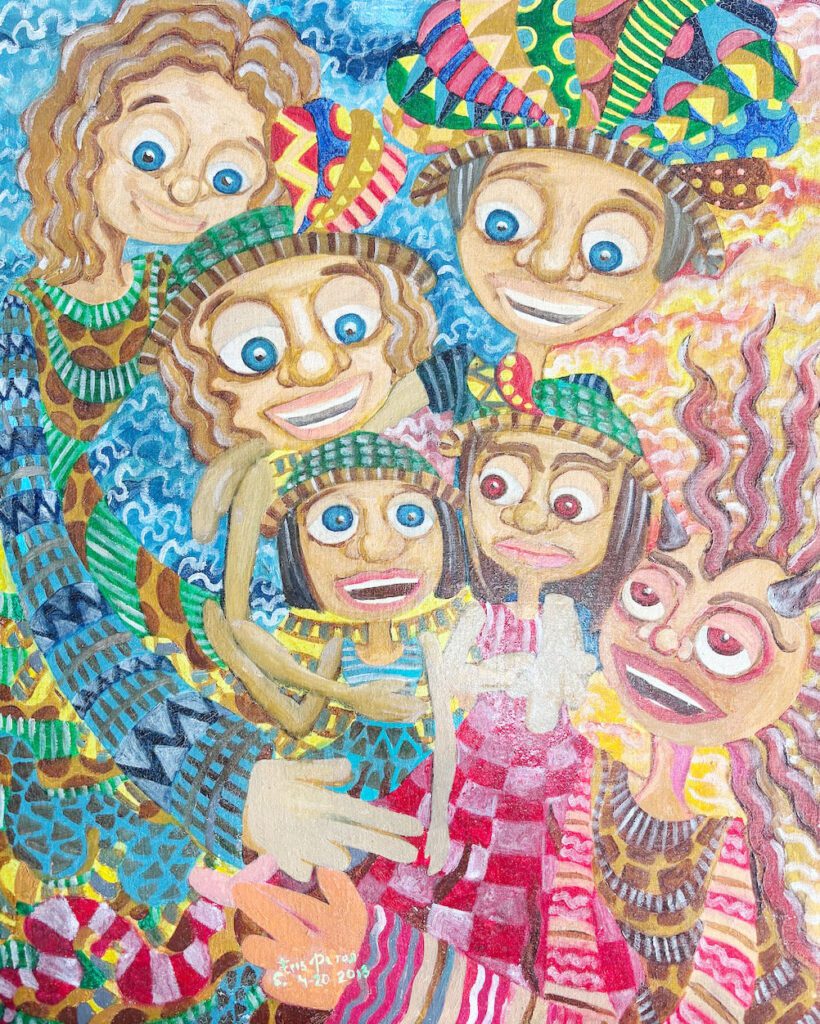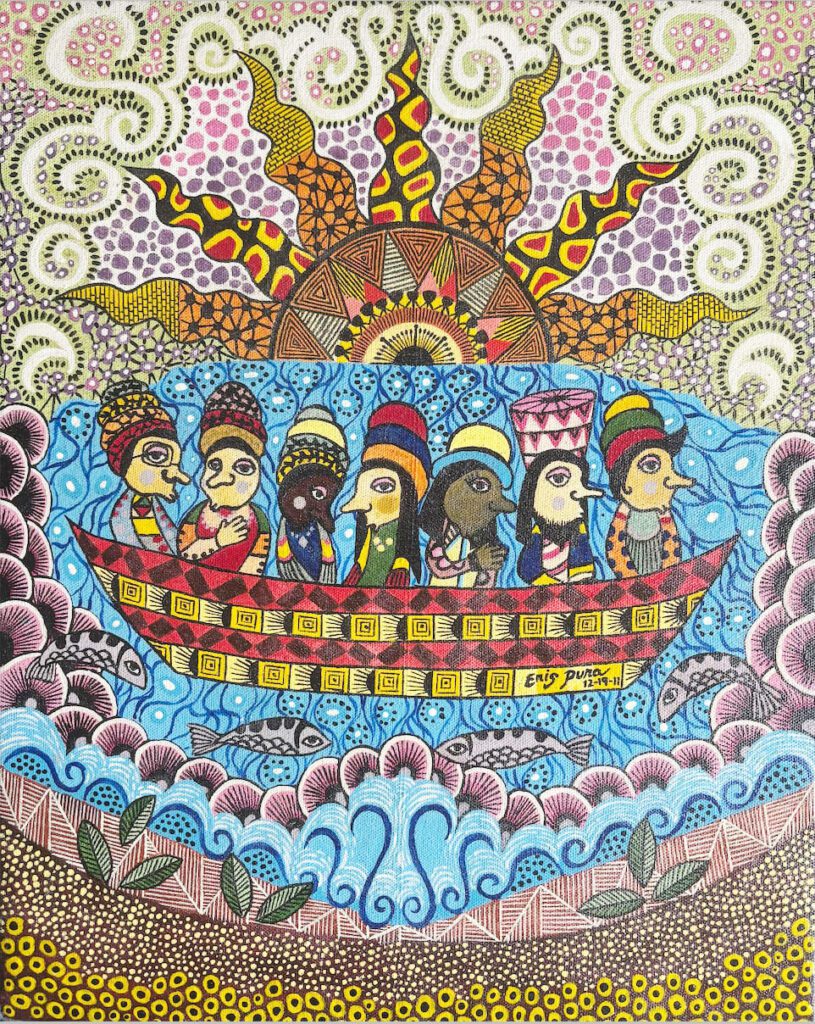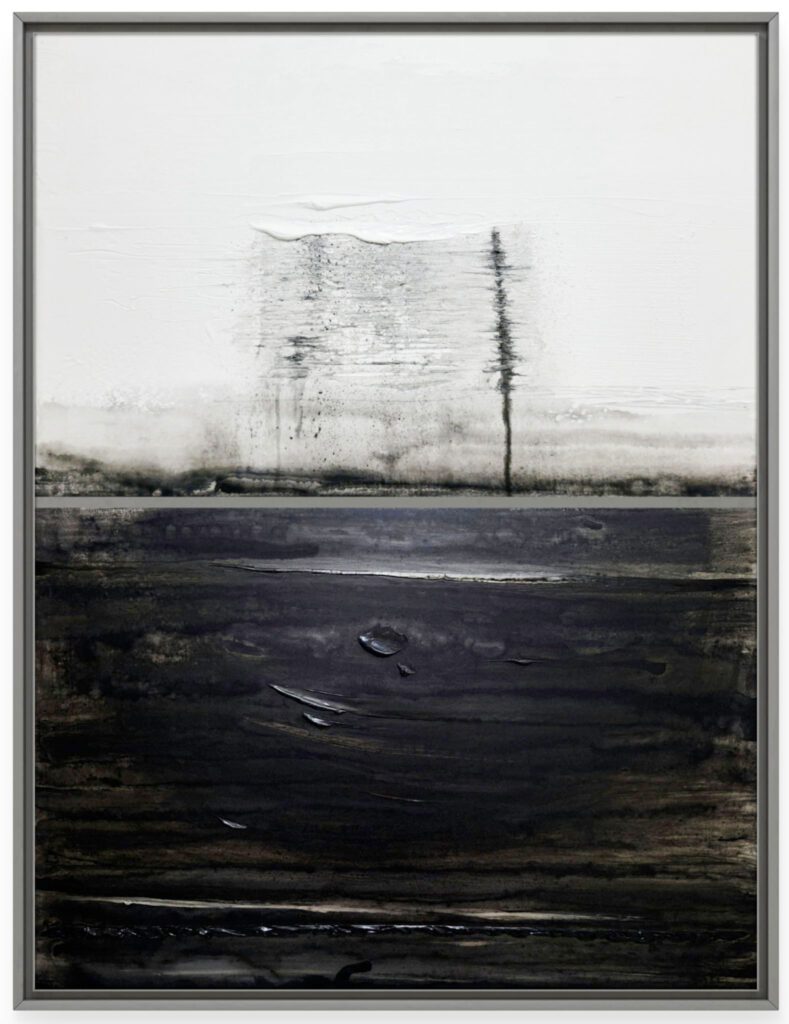In 2011, a friend I had helped through an illness gave me a painting as a thank-you gift. It showed seven royal-like figures in a long boat, surrounded by waves, fish, and an elaborate sun. On the lower right corner of the boat, a signature and date read: “Enis Pura, 12-19-11.” My friend bought the artwork in Quiapo from a Tausug artisan.
I interpreted the painting as a depiction of the tale of the datus of Borneo crossing the sea in a balangay, guided by the movement of celestial bodies. I assumed that story because the artist was a Tausug, and the imagery carried the weight of that indigenous heritage.

Two years later, the same friend gave me another piece by the same hand. Six round-eyed figures in intricate garments and headpieces stood close together against a backdrop of blue streaked with orange and yellow. Unlike the first, which suggested voyage and myth, this one felt like family gathered in celebration.
I searched for the artist online and asked if he was still in Quiapo, but nothing surfaced. The works endured even as the name faded. The first spoke of craft, culture, and friendship. The second hinted at something larger taking root.

That was when I began looking for art on my own. I visited student exhibits at UP and UST, wandered through art fairs and pop-ups in Escolta, Cubao, and Baguio. On Instagram, I followed artists in their studios. Certain colors, textures, and subjects caught my eye, and a collection slowly formed, led by instinct rather than plan.
I started small. A few thousand pesos could bring home a sketch, print, or painting. Many young artists sold works between 5,000 and 20,000 pesos depending on the size, and sometimes on flexible terms. When something drew me in, I asked about the story behind it, the artist’s background, materials used, whether it belonged to a series, and if it was signed or framed. I kept notes, receipts, and certificates of authenticity, and I took photographs of the turnover to document the purchase.

Collecting became more than ownership. Early works may grow in value as artists develop and supporting them at that stage sustains their practice. A collection also mirrors its owner. Some pieces remain central while others step aside as taste changes.
The two paintings still hang in my home, though their maker remains a mystery. His name may be nowhere, but his work endures. That first boat painting became more than a gift. It set me on a course I still follow, toward art that feels true and worth carrying forward.
***
If you are thinking of starting an art collection, begin with works that feel genuine. Consider Joel Reglos, an emerging artist from Quezon Province who has quickly become a favorite among collectors. His paintings carry both personal resonance and lasting value. Quiet, layered, and deeply reflective, his art speaks of lived experience.
“My fourth solo show, Genuine Moments, reflects the shifts in my life and art since turning 31,” Reglos says. “I’ve found joy in a simpler, more intimate life. My world has narrowed to a treasured few, close friends and, most of all, my family.” He adds, “Being a husband and father is my greatest treasure. The time with my wife and children are the genuine moments I strive to capture.”
That grounding in faith, family, and gratitude runs through his canvases and gives them their strength. Genuine Moments runs August 30–October 4 at Altro Mondo Creative Space, Chino Roces Avenue, Makati. Artist reception: August 30, 5:00 p.m. For collectors seeking meaning and depth, Reglos offers a compelling place to begin.





